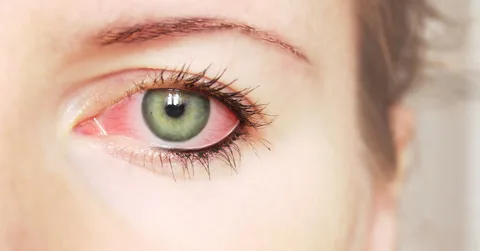Dry eyes can be a debilitating condition. It causes itching, redness, and excess tearing that can interfere with your vision and quality of life.
There are many treatments for dry eyes, including over-the-counter artificial tears and prescription medications. Several newer options have been approved by the FDA, including a once-daily nasal spray called Tyrvaya and cyclosporine eye drops (Restasis), and lifitegrast eye drops (Xiidra).
Cyclosporine A
Whether you have dry eyes because of age, hormones or genetics, there is hope for relief. One of the newest treatment options is Cyclosporine A (Cyclosporine).
The newer versions of this medicine are made as an eye drop in a single-use vial or multi-dose bottle. To use these drops, you place them on your eyelids as directed by your doctor.
It is important to use only the correct dose of this medication for your condition. If you are taking another medicine, talk with your doctor about how to use cyclosporine together.
If you have a kidney disorder, liver disease, or a history of infection, tell your doctor before you take this drug. They may prescribe a lower dose to help prevent side effects such as high blood pressure and kidney damage.
This drug has a black box warning from the FDA, meaning it can cause serious and sometimes fatal side effects. These include lower blood cells that help your body fight infections, an increased risk of cancer, and severe brain infections that can lead to disability or death.
In addition to using this drug, your doctor may suggest other treatments for dry eyes. These may include artificial tears or eye inserts that work like your own natural tears.
Your ophthalmologist may also recommend medications that increase tear production. These medicines are called immunomodulators, and they can decrease swelling in your eyes to allow for increased tear production.
You may be given a nasal spray that increases your tear production by stimulating the nerves in your nose. This treatment is not for people with psoriasis or rheumatoid arthritis, as it can worsen these conditions.
Other treatments for dry eyes may include plugging the tear ducts to keep them from draining too quickly. This treatment can be done with tiny silicone plugs that are removable or a more permanent procedure that uses heat to close the ducts.
In one study, patients with dry eye disease treated with cyclosporine 0.05% (Restasis) in combination with artificial tears for 6 months had more improvement than those who used either vehicle plus artificial tears or artificial tears alone. In addition, the ocular surface dye staining improved in both groups, suggesting that CsA was able to control inflammation in the cornea.
Lifitegrast
Lifitegrast (Xiidra) is a lymphocyte function-associated antigen 1 (LFA-1) antagonist that was approved by the US FDA in July 2016 for the treatment of signs and symptoms of dry eye disease. It belongs to a group of drugs called T-cell integrin antagonists and is thought to work by reducing inflammation that results from the interaction of the inflammatory molecule intercellular adhesion molecule 1 (ICAM-1) with LFA-1.
ICAM-1 is produced by the immune cells that are located near the ocular surface, and its overexpression can lead to increased migration of T cells to the surface of the eye, activation of these T cells through immunological synapses, and the release of pro-inflammatory cytokines. In DED, this inflammatory cycle leads to eye discomfort and decreased tear production.
As a result of this inflammatory response, the ocular surface becomes damaged and produces tears that are less effective at providing lubrication and moisture. As a result, the patient experiences pain, itching, foreign body sensation, and redness.
There are several medications that can help reduce these symptoms, including topical cyclosporine 0.05% (Restasis) and corticosteroids. However, these medications can take a long time to work and have side effects.
Therefore, it’s important to find a treatment that works quickly and is also safe to use. The newest treatment for dry eyes, lifitegrast, is thought to be a faster-acting version of Restasis that can improve signs and symptoms of dry eye within just 2 weeks.
In addition to symptom improvement, lifitegrast is also thought to be more tolerated than Restasis and can be used in patients with allergic reactions to ophthalmic steroids or those who are pregnant or breastfeeding. Unlike Restasis, lifitegrast also has fewer side effects and is less expensive.
The results of the OPUS-3 trial show that lifitegrast 5.0% significantly improved symptoms in participants with moderate to severe DED compared to placebo. Signs such as conjunctival redness score, corneal fluorescein staining score, and conjunctival lissamine green staining score improved with lifitegrast over the 84 days of the study.
In addition to the results of OPUS-3, this chart review provides additional data on lifitegrast’s symptom effects in patients who had not previously received prescription dry eye treatments. The chart review was performed by the ophthalmologists at Shire plc and included 168 patients who were prescribed lifitegrast. Of the 168 patients, 148 reported that their DED symptoms had improved after 6 months of treatment with lifitegrast.
Intense Pulsed Light Therapy
Intense pulsed light therapy, or IPL, is an effective treatment for many different skin conditions. It is a popular treatment for sun damage and brown spots, as well as freckles and broken capillaries. Intense pulsed light can also be used to reduce the appearance of fine lines and wrinkles, and to treat rosacea.
Unlike laser treatments, IPL delivers multiple wavelengths of light energy to the skin, allowing it to be used on a larger area in less time than laser therapy can. This means that IPL is more versatile than lasers and can be used to treat a wide range of skin issues, including age spots, facial veins, acne scars, and redness caused by broken capillaries.
IPL is also an excellent treatment for rosacea, and studies have shown that it can significantly improve rosacea symptoms. In particular, it can relieve flushing, redness, and visible blood vessels, and can be combined with other rosacea treatments to improve the appearance of your skin.
The newest dry eye treatment is a non-invasive treatment called IPL (intense pulsed light). It has been clinically proven to effectively target meibomian gland dysfunction, as well as rosacea symptoms like flushing and redness.
This treatment uses intense pulses of light to break up meibomian gland flora, which is the cause of many ocular surface problems. The light can also reduce inflammation in the meibomian glands, resulting in better vision.
The treatment is simple and painless. After a brief consultation, your doctor will select the appropriate IPL setting for you and will treat your meibomian glands with a series of flashes of light. These pulses penetrate deep into the tissues, causing an intense biochemical response that will eliminate problematic bacteria and flora. The results of your IPL treatment are usually seen after your first session. However, we recommend a series of 3 – 6 IPL treatments to get the best results.
OptiLight
Dry eye symptoms can be a frustrating experience. They can range from blurred vision and itchy eyes to glare and burning. Whether you’re experiencing mild or severe symptoms, your optometrist can help you find relief with a treatment that suits your unique needs.
The newest dry eye treatment is called OptiLight, and it uses patented Optimal Pulse Technology to treat the signs of dry eye disease caused by meibomian gland dysfunction (MGD). This light-based, in-office procedure has been shown to significantly improve tear breakup time, meibum quality, and meibomian gland expressibility. Moreover, it decreases pro-inflammatory mediators and reduces the population of Demodex mites.
OptiLight is the first and only intense pulsed light (IPL) therapy to be FDA-approved for dry eye disease associated with MGD. It is a gentle, noninvasive procedure that has been backed by more than 20 clinical studies.
Your ophthalmologist will carefully cover your eyes with protective shields and apply a coupling gel to the area below your eye. They will use a small applicator to apply light energy to your eyes. It only takes about 5-10 minutes to complete the treatment.
Once the light energy is applied, you may experience a warm sensation that’s very soothing and comfortable. You should expect some discomfort after the treatment, but it will be minimal. It’s also important to follow the post-treatment instructions to decrease your chances of skin flaking, redness, discomfort, and bruising.
After you finish the OptiLight procedure, your eyes will likely feel slightly achy and dry. This is normal and should subside within a few days. However, if you notice your eyes are still a bit itchy and dry afterward, contact your eye doctor to schedule an appointment.
Another important thing to remember is to avoid strenuous exercise, hot baths, and showers for at least 48 hours after your OptiLight treatments. This will help you achieve optimal results and heal quickly.
OptiLight is the newest and most effective dry eye treatment, and it has been proven to provide long-lasting, consistent results for patients. It is ideal for patients with severe or chronic dry eye disease who have tried traditional treatments without success. It can be used alone or in conjunction with other dry eye treatments.





